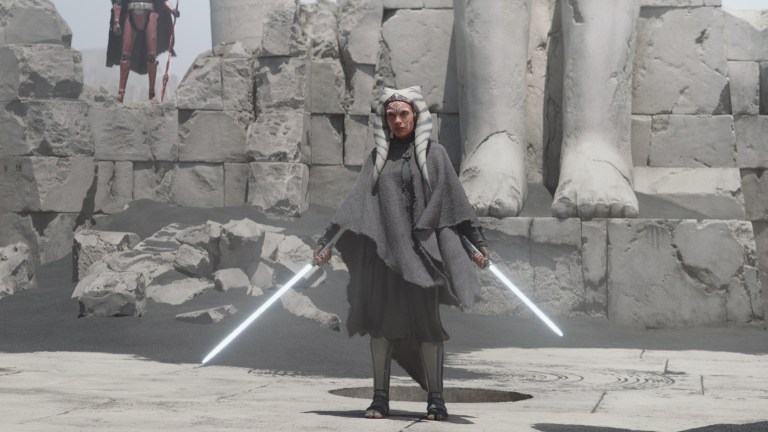Star Wars: Why Did Ahsoka Leave the Jedi Order?
Though we first meet Ahsoka Tano as Anakin Skywalker's Padawan, a tragic event during the Clone Wars forced her to reconsider her place in the Jedi Order.

By the time we catch up with Ahsoka Tano in the New Republic era, which is set five years after Return of the Jedi, the Jedi Order is no more, and the few Jedi left are scattered throughout the galaxy. As shown in Revenge of the Sith, Order 66 systematically wiped out most of the Jedi at the end of the Clone Wars, and the few who survived were forced into hiding, turned into Imperial Inquisitors, became mercenaries, or joined the Rebellion. But while this event did greatly impact Ahsoka Tano’s life and her path forward as a Force-wielder, it wasn’t the catalyst that drove her away from the Jedi Order and her Master Anakin Skywalker.
The last four episodes of Star Wars: The Clone Wars fifth season follow an investigation into a bombing of the Jedi Temple on Coruscant. The investigation is led by Ahsoka and Anakin. The two were off-world at the time of the attack, and therefore the least likely to be involved, at least according to Yoda. However, as the investigation goes on, enough circumstantial evidence surfaces for Ahsoka to be framed for the crime.
Ahsoka goes into hiding, trying to find enough evidence to clear her name, but when she is eventually captured, Republic Admiral Tarkin (yes, that Tarkin) insists that she be tried as a civilian in military court instead of tried by the Jedi. The Jedi Council complies, stripping Ahsoka of her Padawan status and kicking her out of the Order without much hesitation. There are some, like Anakin, Obi-Wan Kenobi, Plo Koon, Ki-Adi-Mundi, and Saesee Tiin, who remain on Ahsoka’s side through the whole ordeal, but most of the Order effectively abandons her.
Ahsoka’s name is finally cleared by Anakin, who discovers that the Padawan Barriss Offee is responsible for the bombing. Even though Ahsoka considered her to be a close friend, Barriss had become disillusioned with the Jedi and believed that they had become more warmongers than peacekeepers. Ahsoka is freed, but the damage has already been done.
The Jedi Council apologizes and asks Ahsoka to return to the Order. They see these events as a “great trial” that will only make her a stronger Jedi, but Ahsoka doesn’t see things that way. Even after Anakin pleads with her to return, she declines, deciding to forge her own path forward within the Force.
Who could blame her? Ahsoka watched as the people she trusted with her life since childhood turned on her. The fact that they believed she was capable of something so horrendous and weren’t willing to fight harder on her behalf made her question everything she had been taught by the Jedi. She was nearly convicted of a crime she didn’t commit, and all they had to offer her in the aftermath was an apology and “what a great life-lesson this was” platitudes.
Ahsoka does return in the seventh season of The Clone Wars to help liberate Mandalore from the clutches of Darth Maul, a battle that takes place at the same time as Revenge of the Sith, Order 66, and the fall of Anakin Skywalker to the dark side. Years later, when Ahsoka learns of her master’s transformation into Darth Vader on Rebels, she partially blames herself for Anakin’s turn to the dark side and holds some regret for leaving him and the Order behind. However, this decision gave her the opportunity to build her own connection to the Force outside of Jedi or Sith teachings and become the strong warrior we see in Ahsoka. Her moral compass is still as strong as ever, and her dedication to helping Grogu and Luke rebuild the Order in The Book of Boba Fett and her willingness to take on Sabine as an apprentice proves that she’s willing to help the Jedi move forward, but in her own way.
Star Wars: Ahsoka is streaming now on Disney+.
